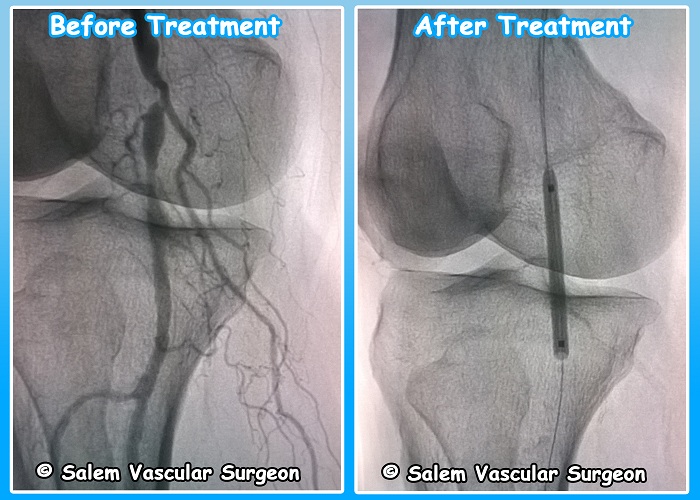Angioplasty & Stenting

Angioplasty & Stenting
Angioplasty (or balloon angioplasty) is an endovascular procedure to widen narrowed or obstructed arteries or veins, typically to treat arterial atherosclerosis. An empty, collapsed balloon, known as a balloon catheter, is passed over a wire into the narrowed locations and then inflated to a fixed size.
The balloon forces expansion of the stenosis (narrowing) within the vessel and the surrounding muscular wall, opening up the blood vessel for improved flow, and the balloon is then deflated and withdrawn. A stent may or may not be inserted at the time of ballooning to ensure the vessel remains open.
Risks and complications
Relative to surgery, angioplasty is a lower-risk option for the treatment of the conditions for which it is used, but there are unique and potentially dangerous risks and complications associated with angioplasty:
- Embolization, or the launching of debris into the bloodstream.
- Arterial rupture from over-inflation of a balloon catheter or the use of an inappropriately large or stiff balloon, or the presence of a calcified target vessel.
- Hematoma or pseudoaneurysm formation at the access site.
- Radiation Injuries Radiation induced injuries (burns) from the X-Rays used.
Angioplasty may also provide a less durable treatment for atherosclerosis, and be more prone to re-stenosis, relative to vascular bypass or coronary artery bypass grafting.
Recovery
- After angioplasty, most patients are monitored overnight in the hospital, but if there are no complications, patients are sent home the following day.
- The catheter site is checked for bleeding and swelling and the heart rate and blood pressure is monitored. Usually, patients receive medication that will relax them to protect the arteries against spasms. Patients are typically able to walk within two to six hours following the procedure and return to their normal routine by the following week.
- Angioplasty recovery consists of avoiding physical activity for several days after the procedure. Patients are advised to avoid any type of lifting, or other strenuous physical activity for a week. Patients will need to avoid physical stress or prolonged sport activities for a maximum of two weeks after a delicate balloon angioplasty.
- After the initial two week recovery phase, most angioplasty patients can begin to safely return to low-level exercise. A graduated exercise program is recommended whereby patients initially perform several short bouts of exercise each day, progressively increasing to one or two longer bouts of exercise. As a precaution, all structured exercise should be cleared by a cardiologist before commencing.
- Patients with stents are usually prescribed an antiplatelet, clopidogrel, which is taken at the same time as acetylsalicylic acid (aspirin). These medicines are intended to prevent blood clots and they are usually taken for at least the first months after the procedure is performed. In most cases, patients are given these medicines for one year.
- Patients who experience swelling, bleeding or pain at the insertion site, develop fever, feel faint or weak, notice a change in temperature or color in the arm or leg that was used or have shortness of breath or chest pain should immediately seek medical advice.
